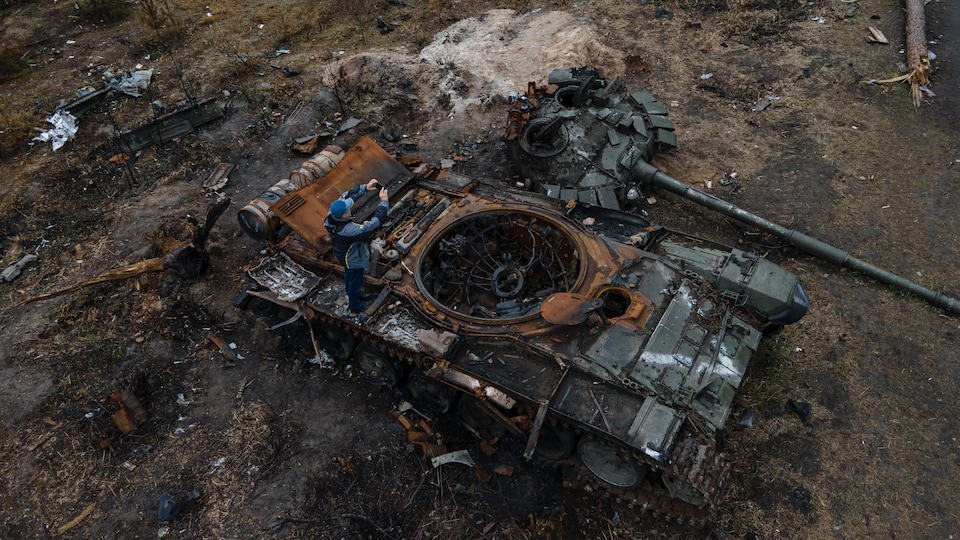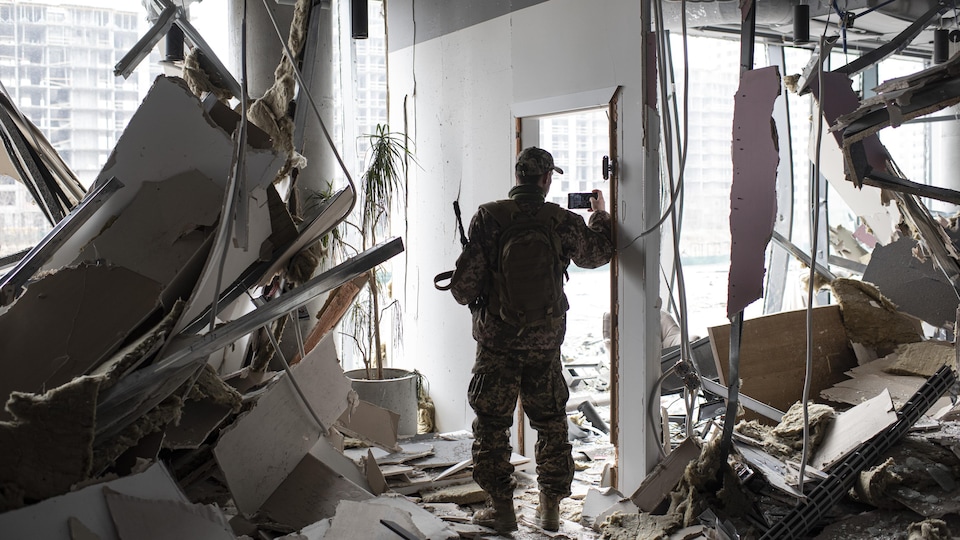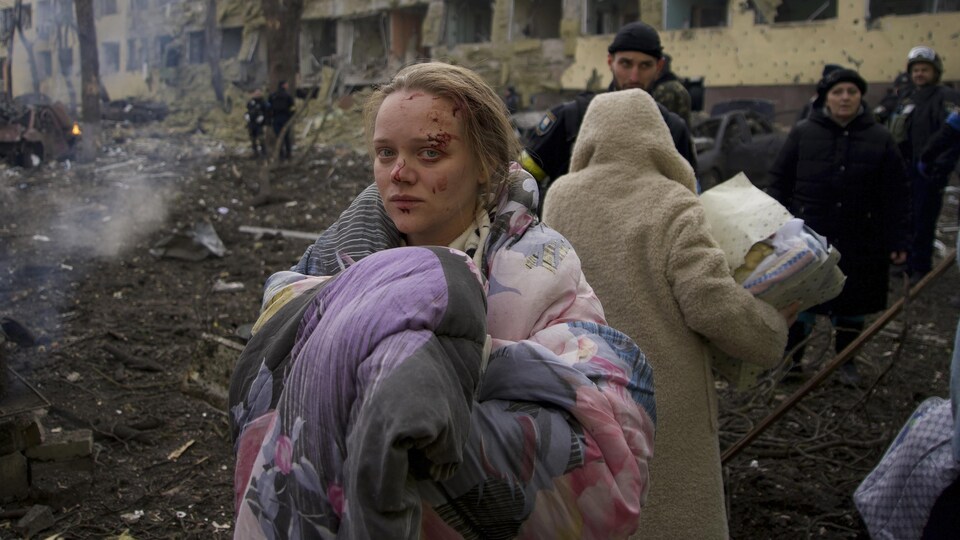No war has been recorded as good as what happened in Ukraine, especially with intelligence from open sources (open source intelligence, or OSINT). The NGO Mnemonic, which collects and verifies the authenticity of material recovered online about alleged crimes in Ukraine, has already archived hundreds of thousands of publications in the hope that one day the this as evidence in court.
Since the Boutcha massacre, France, the United States, and more recently the International Criminal Court and the United Kingdom, have alternately announced the dispatch of investigators to assist their Ukrainian counterparts in their investigations into possible war crimes. .
However, another part of the work, just as important, is done remotely.
Not only are we fortunate to be on earth, to have direct access to testimonies – which rarely happens -, but we are also witnessing an unprecedented effort in terms of archives, coordination and review. […] through new techniques andOSINTexplained Marie Lamentsch, project coordinator at the Montreal Institute for Genocide and Human Rights Studies (MIGS) at Concordia University.
Through these technologies, Amnesty International’s Evidence Lab compiles a list of unlawful attacks that have severely damaged infrastructure, injured or killed civilians in Ukraine. Similarly, investigative media journalists Bellingcat list the events they have analyzed on an interactive map (New window) of Ukraine and Russia.
The latter is supported in their efforts by Mnemonic, a Berlin-based NGO that archives and investigates cases of human rights violations using information obtained byOSINT.
Building on previous projects documenting suspected crimes in Syria, Yemen and Sudan, the organization is working to build a “Ukrainian Archive”.
So far we have archived 500,000 items, says Libby McAvoy, legal counsel at Mnemonic. It was in TikTok and Telegram that the NGO found the most publications, he pointed out.
But the work doesn’t stop at archiving: the Mnemonic team is busy confirming the authenticity of the preserved content, making sure to keep track of any changes made to the original publication. Metadata is taken from here to get time and location details.
A thorough examination is also conducted to determine a series of elements, such as spoken language, weather, visible clothing, weapons or ammunition and any other signs. When we get to the investigation stage, we seek to understand, for example, where and when the attack took place, as well as the people involved-the attackers as well as those affected.explanation by Libby McAvoy.
Investigators can also use satellite imagery and flight data in aerial bombing cases. They also try to verify some information to people present at the time of the attack, such as survivors, relatives of victims or medical personnel.
Today, Mnemonic and its partners still collect and verify the authenticity of many videos, photos and audio content that are circulated online, in compliance with the standards set by the Berkeley Protocol.
This is the procedure to follow for collecting and archiving data from open sourcessummarizes the microphone of 6th day (New window) Nadia Volkova, human rights lawyer atUkrainian Legal Advisory Groupworking with Mnemonic.
At every stage of the process, transparency is important. Investigators are desperate to make sure they respect the different jurisdictions and the rules of evidence so that all preserved material is not thrown out of court.
To do this, Mnemonic must determine the origin of any element submitted and show that it has not been modified.
With content from social media, there are always issues of validation and interpretation that come uptaught Frédéric Mégret, full professor in McGill’s Faculty of Law and specialist in international criminal justice.
The image can be deceptive, he continues, so it is a question of restoring it to a judicial context, with a limit of proof still relatively high because it is necessary to prove guilt beyond a reasonable doubt.
Learn from Syria
Although Mnemonic has archived more than 3 million digital items in its “Syrian Archives”, which began in 2014, they have not been submitted as evidence in court.
The documentation archived by Mnemonic deals with attacks on civilian infrastructure or the use of chemical weapons. It therefore has no place in criminal trials targeted at Syrian torturers, Libby McAvoy explains.
However, the context seems very different in the case of Ukraine, compared to other projects we have worked on.said Ms. McAvoy, noting that the organization’s methods and tools have been refined since it began.
The NGO was able to get its hands dirty, especially by documenting Russia’s bombings of Syria in 2011.
Since the invasion of Ukraine began, similarities have been drawn between the two conflicts. As in Syria, civilian infrastructure, schools, nurseries, hospitals and public markets were bombed.
” When you see what Mariupol looks like today, it’s hard not to imagine Aleppo, Syria. “
If open-source intelligence also made it possible to document the atrocities committed in Syria, this time the access would be more direct than ever. Especially thanks to social networks.
Since the end of February, videos taken by teenagers who had to take shelter from bombs in bunkers or by Ukrainian soldiers sent to the front have found their way into the web giants ’algorithm.
However, the challenge remains to archive this digital evidence, which often includes explicit images of violence, before it is deleted by platforms.
This is at the heart of the creation of the Syrian Archives, says Libby McAvoy. The founders of Mnemonic, Syrian journalists Hadi Al-Khatib and Jeff Deutch, had noticed that most of the video material documenting human rights abuses in Syria on social media has been removed and made inaccessiblehe continued.
For its “Ukrainian Archives”, Mnemonic and its partners have tried to establish a communication channel with digital giants, such as Meta (Facebook, Instagram) and Twitter.
This remains a big problem, and we are working hard here to negotiate with them.suggests for her part Nadia Volkova, of the NGO Ukrainian Legal Advisory Group.
War crimes, crimes against humanity or genocide?
The work of collection, verification and archiving is not a guarantee of the receivability of the court material. Nadia Volkova sincerely hopes that the information collected will one day be used as evidence before courts, both nationally and internationally.
These publications collected online will give weight to witness statements before a court of law.
The files could fall into the hands of the International Criminal Court, if the national courts do not pick up. Prosecutors will have the formidable task of identifying those responsible and proving without any doubt the crimes they have committed.
Since the first attacks, there has been more and more evidence that seems to indicate that war crimes were committed in Ukraine by Russian military forces.
US President Joe Biden has even gone so far as to call Russia’s acts genocide – statements also made by Canadian Prime Minister Justin Trudeau. Not so quick to take this formula, French President Emmanuel Macron for his part declared that it was up to the lawyers to judge.
In the case of genocide, it must be shown that every act committed comes from an intention: the destruction and extermination of a group, or part of a group, in a targeted manner. The idea of this intention is really hard to proveemphasizes Marie Lamentsch.
This is why there is not enough evidence such as videos or photos. To produce a concrete file, it will also require communications intended for Russian officials inside, intercepted telephone conversations, documents, speeches, editorials or propaganda material attesting to the intent. this, he gives as an example.
With or without genocide, no one really knowsbelieves Frédéric Mégret.
” It is clear that there are executions, that this is illegal and that there is, at least, a war crime. But is there really genocidal intent or are Russian soldiers doing something because they are not disciplined? “
It is difficult to draw a conclusion, even if the elements suggest that a genocide was being committed, the same definition of the international criminal justice specialist.
Although the term genocide either in more cases – and reviving images of bodies abandoned on the streets of Rwanda or concentration camps during the Holocaust – war crimes or crimes against humanity are less serious, Ms. recalls. Lamentsch.
A war crime is any act committed against persons protected by the Geneva Conventions, such as civilians not engaged in combat, injured or captured. A crime against humanity is characterized by the repeated and planned nature of attacks against a civilian population.
We see how systematically civilians are targeted, and not just soldiers, the specialist observes. Soon the army [ukrainienne] come to a city liberated again, there are only dead civilians, when there is no reason to kill civilians in this way.
It is up to the courts to decide the question. It may take several years before the guilty verdict falls, especially in the case of the highest official, underline the experts consulted by Radio-Canada.
Whether the digital evidence passes trial in court or not, combining them to show that crimes have been committed is a necessity, even a duty to remember, according to Marie Lamentsch. Especially since Russian President Vladimir Putin has never stopped completely deny the factseven accusing Ukraine of kill one’s own child.
This is thanks to this archiving effort that we can show the truth to the worldhe added. And for the families of the victims, this is important.
Source: Radio-Canada


